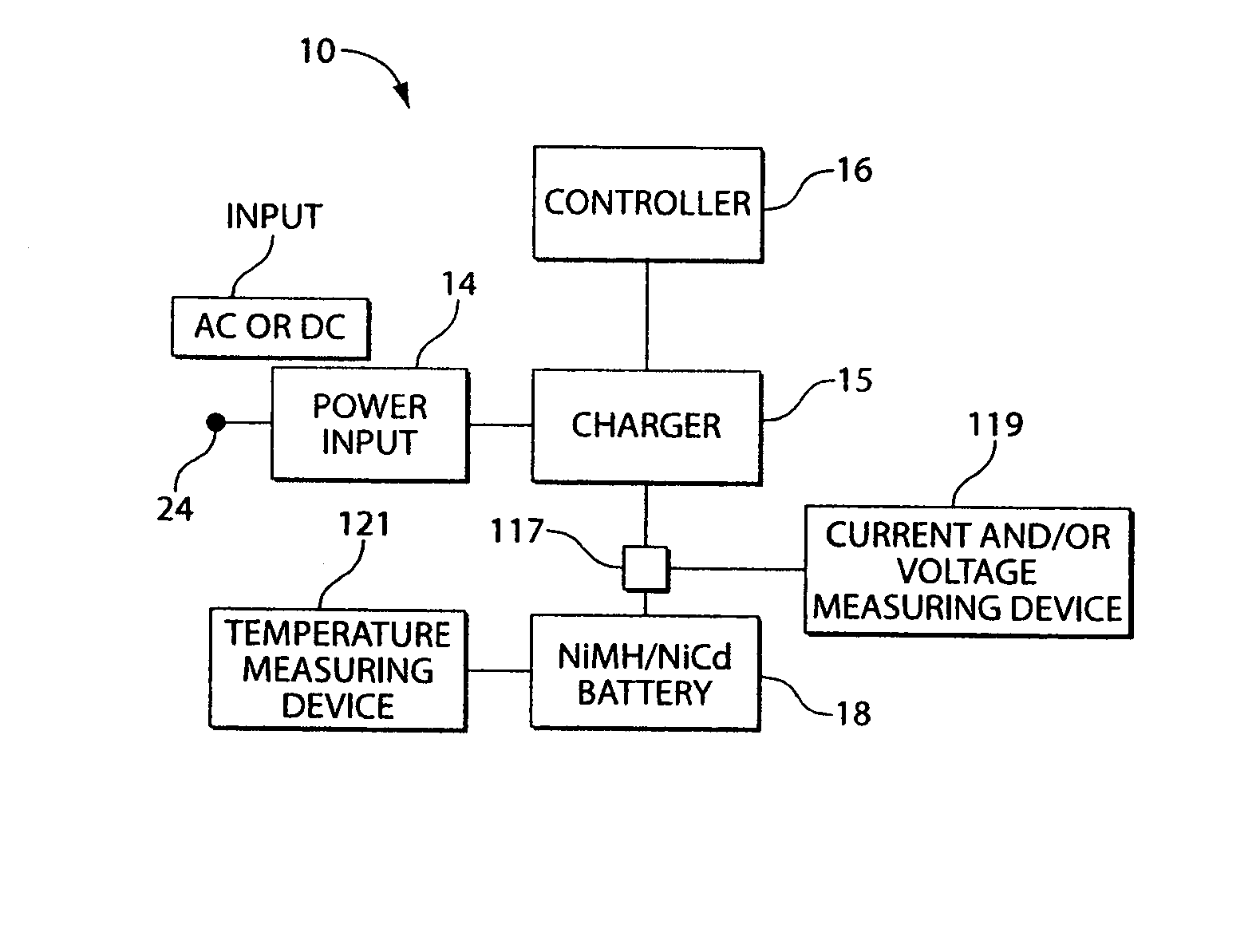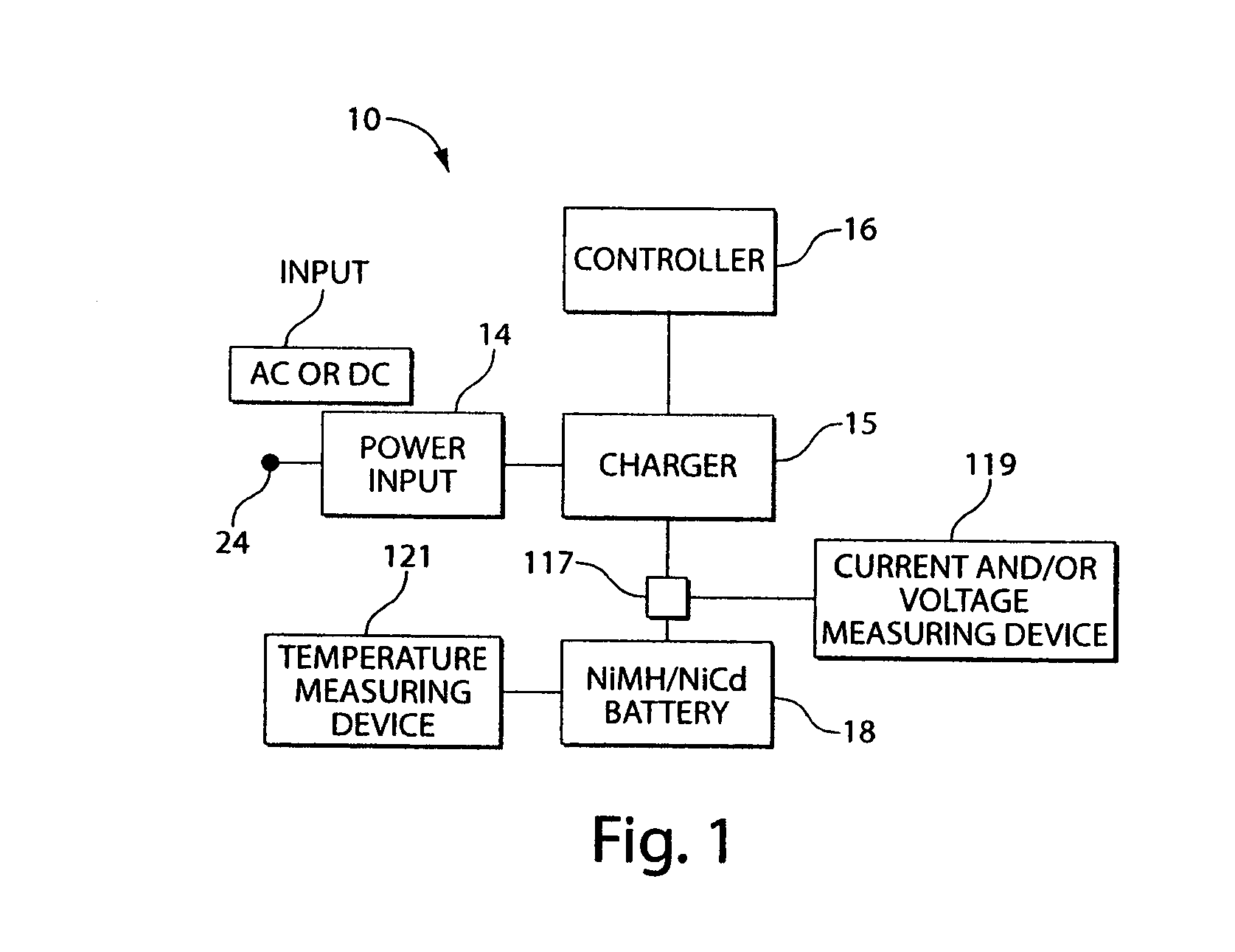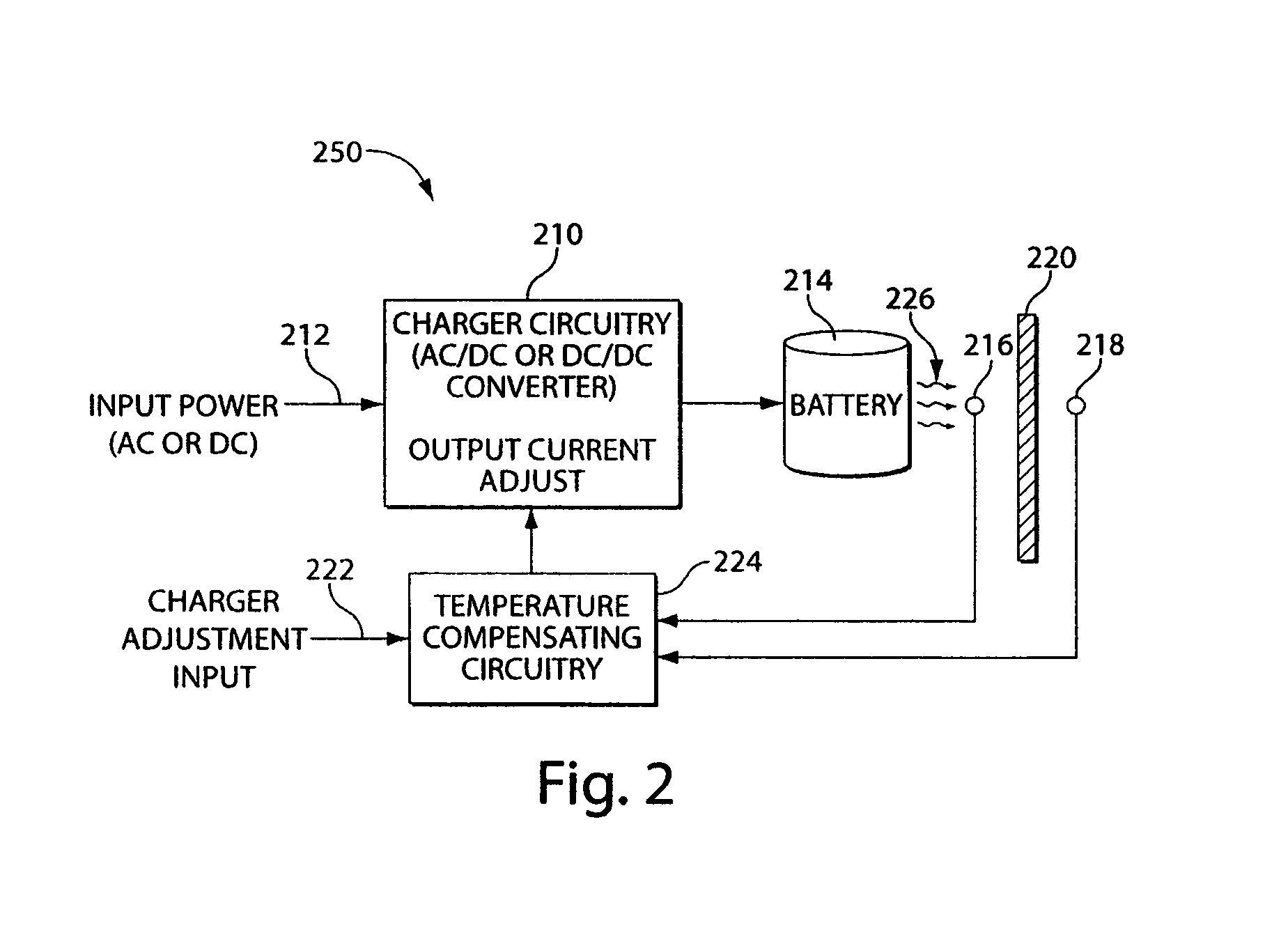Method and system for charging a NiMH or NiCd battery
- Summary
- Abstract
- Description
- Claims
- Application Information
AI Technical Summary
Benefits of technology
Problems solved by technology
Method used
Image
Examples
example
By way of example if,
[0053]Vb is 1.5V (typical for one cell),
[0054]Rs is 0.11 (typical of a small battery size),
[0055]Zth is 10° C. / Watt (a function of the placement of the probes)
[0056]Set Td to 0.2° C. (by controlling the reference voltage to the amplifier).
To determine the steady-state overcharge charge maintenance current, use equation (14):
[0057]Iocv=TdVb×Zth=13mA(14)
and according to equation (6),
Pdiss=(Io2×Rs)+(Iocv×Vb)=20 mW (6)
20 mW of heat is generated by the excessive charge current in the battery during the float charging mode. This is a small and manageable amount of heat resulting in only a 0.2° C. rise in the battery above ambient.
To determine the full charging current at the beginning of the charge cycle, use (12):
[0058]Io=TdRs×Zth=0.45A(12)
and the internal Pdiss is also,
Pdiss=(Io2×Rs)+(Iocv×Vb)=20 mW (6)
By fixing the measured temperature differential, ΔT, to Td, the internal energy dissipation rate is held to a fixed value no matter what the battery's state of ch...
PUM
 Login to View More
Login to View More Abstract
Description
Claims
Application Information
 Login to View More
Login to View More - R&D
- Intellectual Property
- Life Sciences
- Materials
- Tech Scout
- Unparalleled Data Quality
- Higher Quality Content
- 60% Fewer Hallucinations
Browse by: Latest US Patents, China's latest patents, Technical Efficacy Thesaurus, Application Domain, Technology Topic, Popular Technical Reports.
© 2025 PatSnap. All rights reserved.Legal|Privacy policy|Modern Slavery Act Transparency Statement|Sitemap|About US| Contact US: help@patsnap.com



